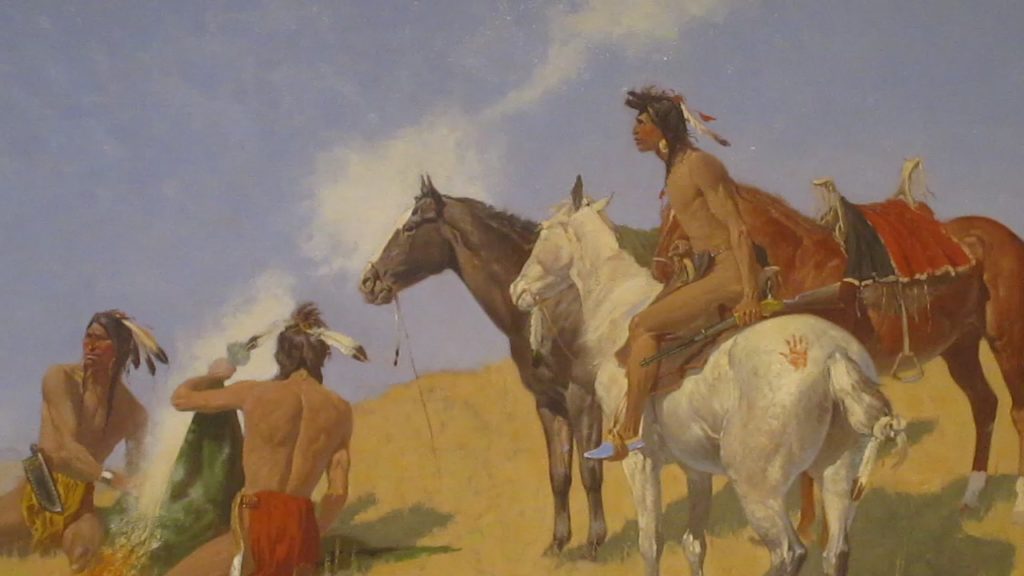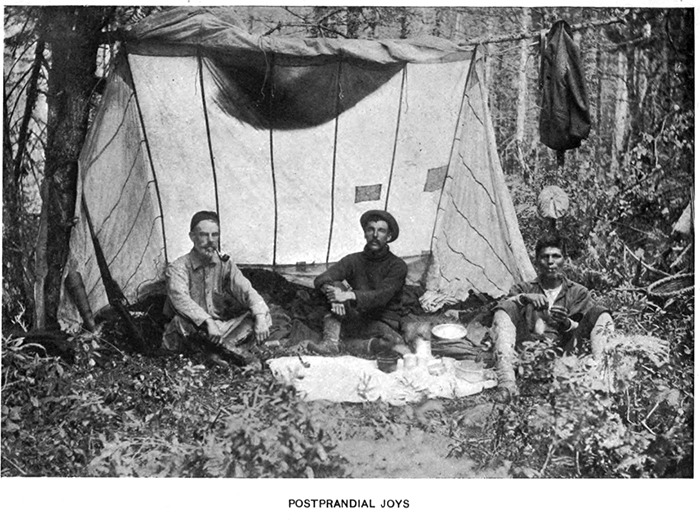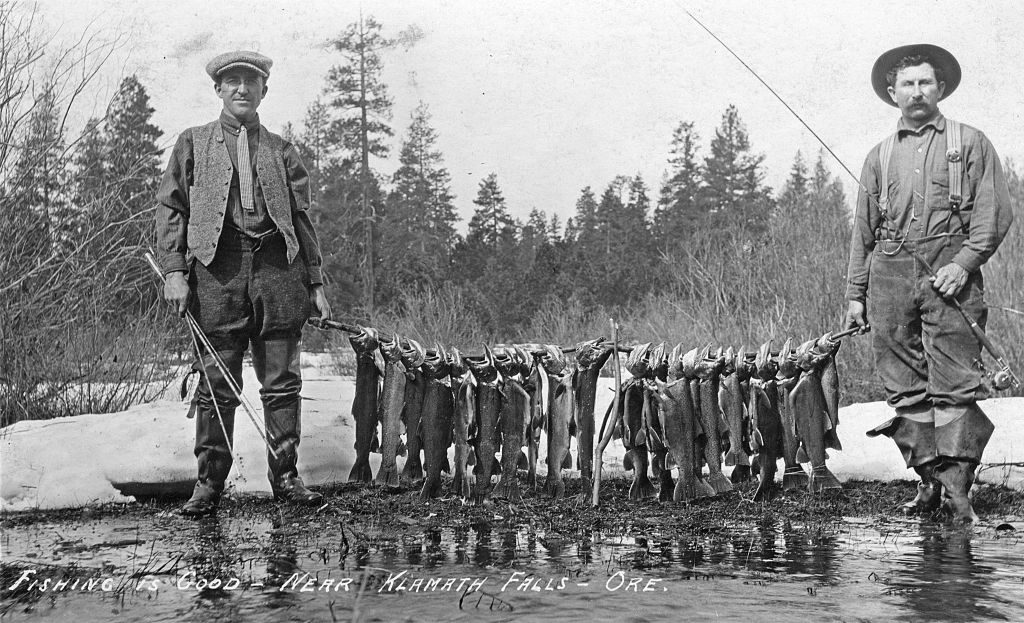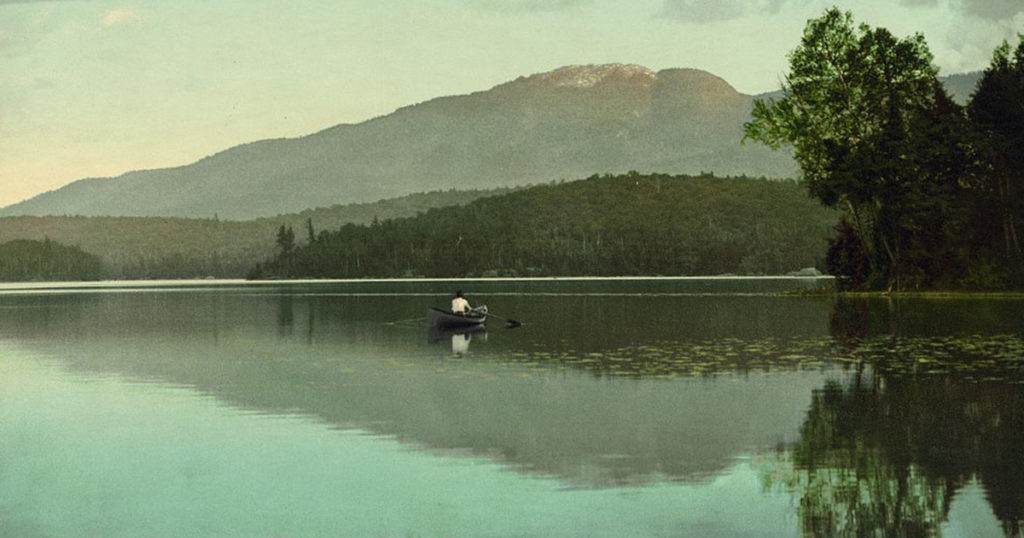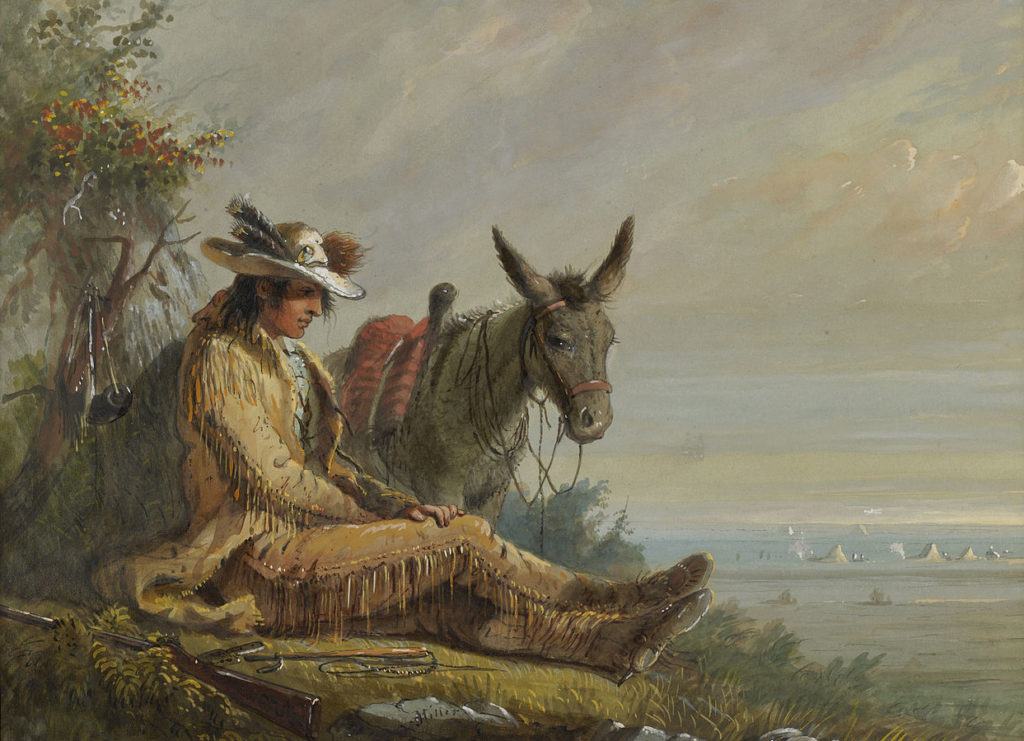
Even though I’m one of the people who the author of these recipes so aptly puts it “could not boil water without burning it,” I still take a keen interest in the camp recipes that I come across. I’ve found interesting recipes this summer, including those for slumgullion and snits and knepp, but these recipes for spider-cake, apple slump and pudding sauce come from “Camping and Camp Cooking” by Frank A. Bates (Matasiso), 1909
The author, Frank A. Bates, qualifies himself by saying his book “is the result of an experience of over twenty years, during which the writer has spent many months in the woods, and fitted out many other parties for their summer vacations. Over the camp fire, while discussing methods with other campers, or instructing the learner “how to do it,” he has been asked many times to put his ideas into shape for publication… it is his hope that everyone who takes this little book with him to camp, may enjoy himself to the limit.”
I found this quote from the introduction of Bates’ book amusing.
“We can live without Love – what is passion but pining? But where is the man who can live without dining?”
The following are interesting portions of the introduction to the book followed up by the recipes for spider-cake, apple slump and pudding sauce. Enjoy!




